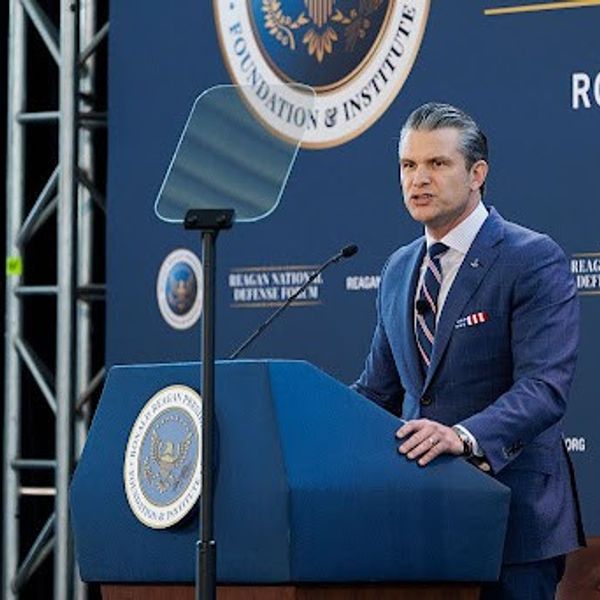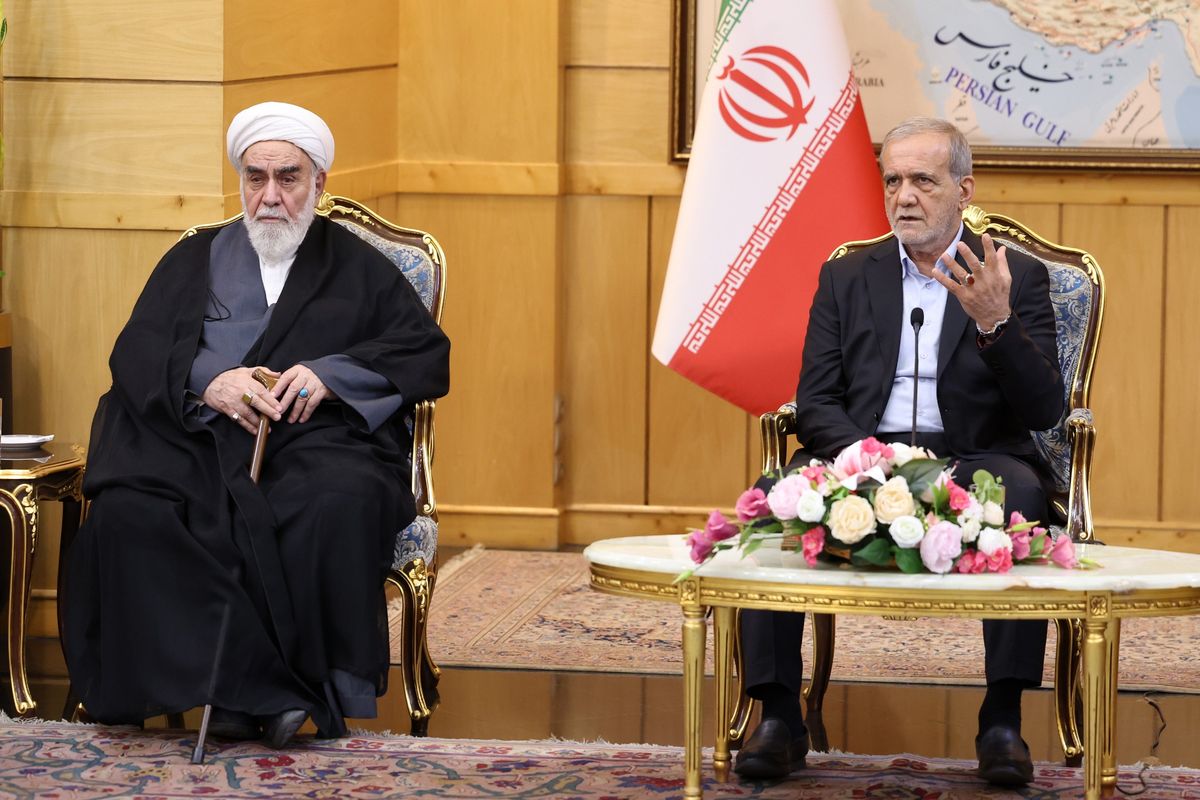The Trump administration may open the New Year with a bang – a nuclear bang – with the impending release of its Nuclear Posture Review.
One of President Donald Trump’s first executive orders, signed a week after he took office, included directing Secretary of Defense James Mattis to “initiate a new Nuclear Posture Review to ensure that the United States nuclear deterrent is modern, robust, flexible, resilient, ready and appropriately tailored to deter 21st-century threats and reassure our allies.”
To some Trump national security supporters, those words could be interpreted as calling for developing new, low-yield weapons, a return to testing, and preparing to put strategic bombers back on 24-hour alert.
Two Obama administration pledges will be reversed or ignored: not to use nuclear weapons against non-nuclear states; and the long-range goal of eventually doing away with nuclear weapons altogether.
People have not forgotten that Trump has had his verbal ups-and-downs discussing nuclear weapons, starting with campaign references to, “My uncle [who] used to tell me about nuclear before nuclear was nuclear.” He was referring to John Trump, an MIT professor of engineering who specialized in X-ray machines and radar.
Then there was the December 2016 debate moment, when Trump was asked twice to explain his “priority among the Triad” and rambled on, not recognizing the Triad referred to the three U.S. nuclear delivery systems, and finally saying, “I think — I think, for me, nuclear is just the power, the devastation is very important to me.”
But matters became more serious when in August, now-President Trump threatened North Koreans and their leader Kim Jong-un by saying, “They will be met with fire and fury, and frankly power the likes of which this world has never seen before.” To show he was thinking nuclear weapons, Trump tweeted the next morning at 7:56 am, “My first order as President was to renovate and modernize our nuclear arsenal. It is now far stronger and more powerful than ever before....”
That was typical, Trumpian off-the-cuff rhetoric. Frightening as the words seemed, it took a subsequent Senate hearing to reassure people that there are both civilian experts and military officials standing between Trump and an actual nuclear weapons launch.
However, Trump can seriously influence future U.S. nuclear weapons policy based on what happens to recommendations contained in the upcoming Nuclear Posture Review. Then only Congress could influence the outcome.
First off, remember the U.S. is already in the midst of the Obama administration’s major renovation of its nuclear delivery systems, upgrading the tactical B-61 nuclear bomb and the long-range, nuclear-tipped cruise missile, along with slowly modernizing the complex that builds and sustains nuclear weapons.
A new class of 12 Columbia strategic submarines, each carrying 16 missiles is starting to be built with the first scheduled to be procured in 2021 and the last in 2035. Each is expected to have a 42-year life, meaning the final sub could be operating in 2077. The total acquisition cost is estimated at more than $100.2 billion – not including the costs of the missiles it will carry.
The Air Force is designing a next-generation bomber, the B-21 Raider, to replace the ancient B-52s and B-1s beginning in the 2030s and 2040s. The plan is purchase some 100 at a price between $511 million to $550 million apiece.
Development of the next generation land-based ICBM has begun under a plan that will see delivery of 666 missiles beginning in 2028 at a lifetime cost of some $100 billion.
The Obama fiscal 2017 plan for the above nuclear forces, if carried out over the next 30 years, was estimated to cost $1.2 trillion, according to an October 2017 Congressional Budget Office report. That includes $400 million for modernization and $800 billion to maintain and operate the systems.
Ironically, this new construction under Obama was the cost of gaining Republican support for the New START treaty with Russia that was signed April 8, 2010, and went into effect on February 5, 2011. It set new warhead deployment limits that go into effect next month: 1,550 warheads each, down from 2,200.
Currently, according to figures exchanged under the START Treaty, the U.S. has some 1,393 warheads deployed on 660 land- and submarine-based intercontinental ballistic missiles and strategic bombers. In addition, there are an additional 4,000 warheads active and inactive warheads stockpiled and another 2,800 retired and awaiting dismantlement.
Treaty signatory Russia is the only country close, with 1,561 deployed on 501 ICBMs and strategic bombers. North Korea, these days considered the greatest threat to the U.S., at best has 20 bombs or warheads.
The Trump administration’s Dec. 18, National Security Strategy gave no hint at what may be in the Nuclear Posture Review. It did favorably mention “the extension of the U.S. nuclear deterrent to more than 30 allies and partners helps to assure their security, and reduces their need to possess their own nuclear capabilities.”
That seems to be in contrast to past Trump statements that threatened removal of the U.S. “nuclear umbrella” from allies such as Japan and South Korea if Tokyo and Seoul did not pay more for America’s protection. Both countries have since have had senior officials talk of producing their own nuclear weapons in the face of North Korea’s successes toward developing them.
In another statement that showed distance from some other past Trump statements, the new National Security Strategy stated, “To avoid miscalculation, the United States will conduct discussions with other states to build predictable relationships and reduce nuclear risks. We will consider new arms control arrangements if they contribute to strategic stability and if they are verifiable.”
Needless to say, Trump’s own statement when releasing this strategy paper never once mentioned nuclear weapons.
There are, however, plenty of voices around him calling for a more active U.S. nuclear weapons program.
In March, the non-partisan Defense Science Board said the Department of Energy “must re-establish the knowledge base in nuclear matters and the art of deterrence among both civilian and military leadership, which has largely atrophied. In short, ‘nuclear’ still matters, nuclear is in a class of its own, and nuclear cannot be wished away.” It also said the Pentagon needed the ability to fight through a nuclear battlefield and “provide, if needed, additional nuclear options.”
A nuclear review by Dr. Keith B. Payne’s National Institute for Public Policy last April, chaired by former Livermore National Laboratory Director Dr. John S. Foster, Jr., recommended that “the 2017 NPR [Nuclear Posture Review] should explicitly reestablish deterrence and assurance—coupled with preparations for damage limitation in the event of deterrence failure—as the priority goals for U.S. nuclear policy.”
In May, the Heritage Foundation restated its long-standing recommendation for resuming nuclear weapons tests stating, “The assessment of the reliability of life-extended weapons could be less uncertain. The United States could validate computer codes that it currently uses to assess what is happening in the nuclear stockpile and increase the margins of certainty that nuclear warheads will perform as expected.”
In November, a former Obama administration official made the argument for low-yield weapons in an article on the War on the Rocks website. “There is no evidence that the mere possession of these weapons during the Cold War made the United States more likely to use them,” argued John R. Harvey, a former Principal Deputy Assistant Secretary of Defense for Nuclear, Chemical and Biological Defense Programs during the Obama administration. “Rather, these weapons were never used because nuclear deterrence worked.”
It may well be that such arguments may appeal to Trump and thus find a place in the upcoming Nuclear Posture Review.
Given already existing concerns about Trump’s finger being anywhere near the nuclear button, we could be seeing in the next month the start of a public discussion on nuclear weapons followed by a much-needed debate in Congress on the same subject.













